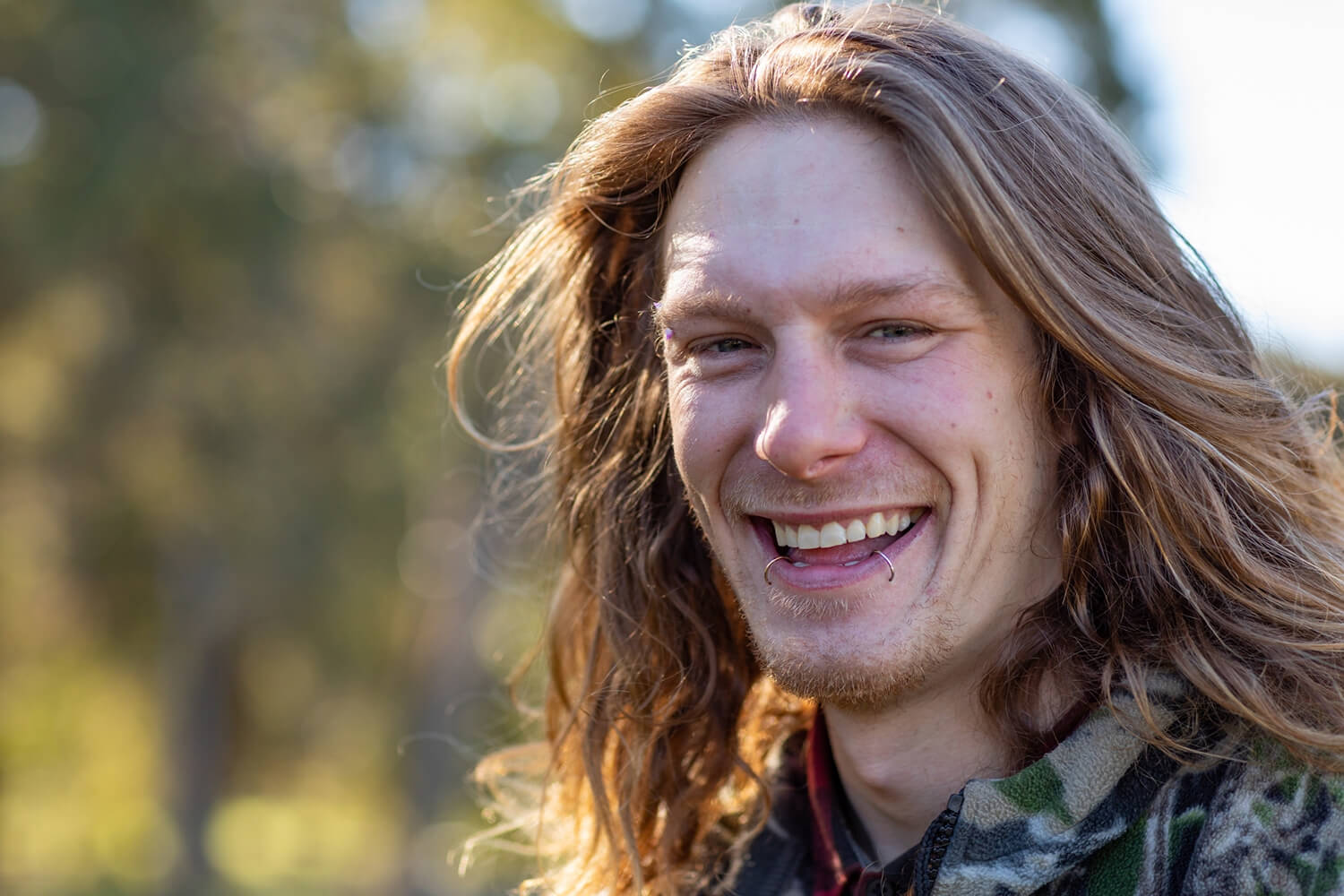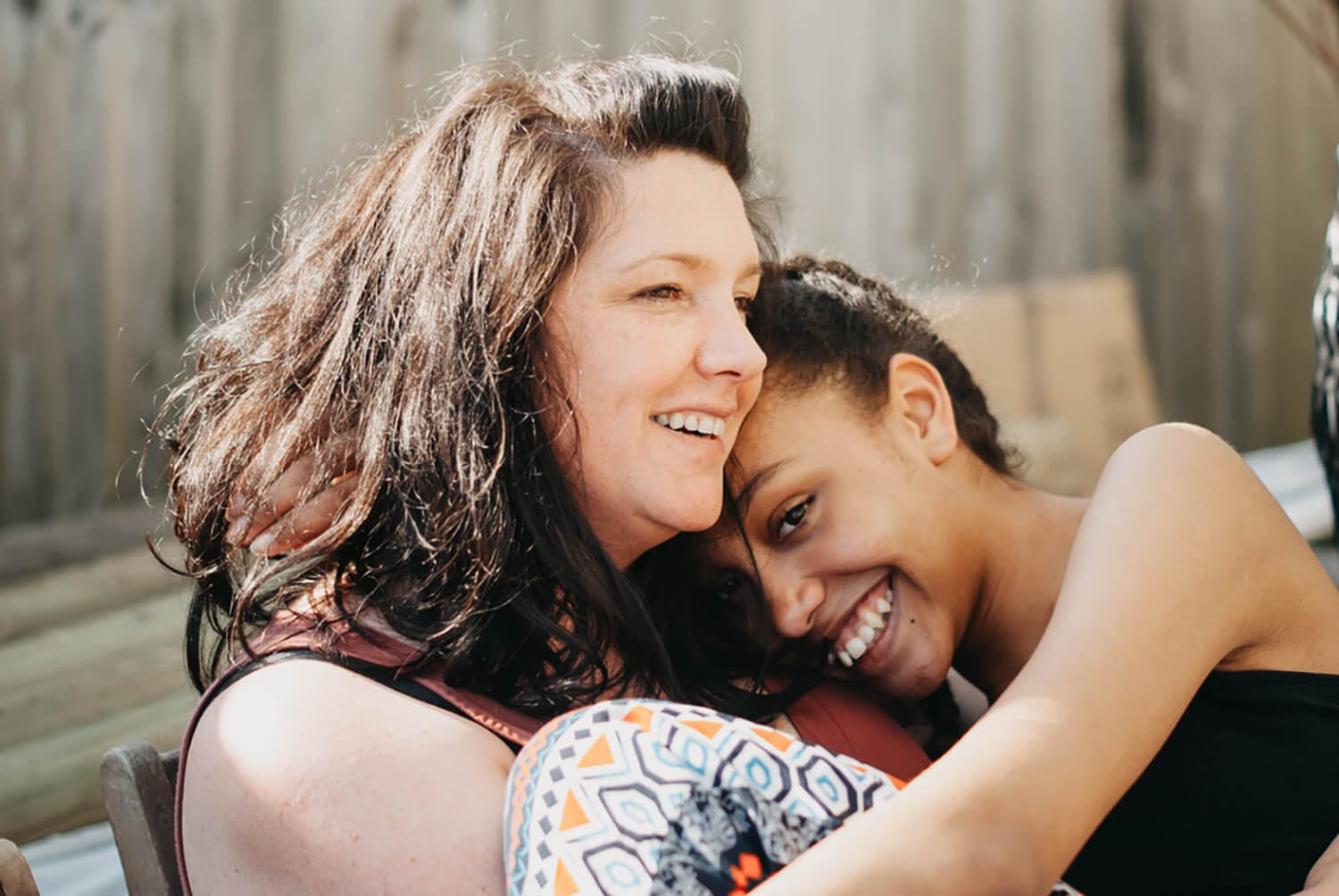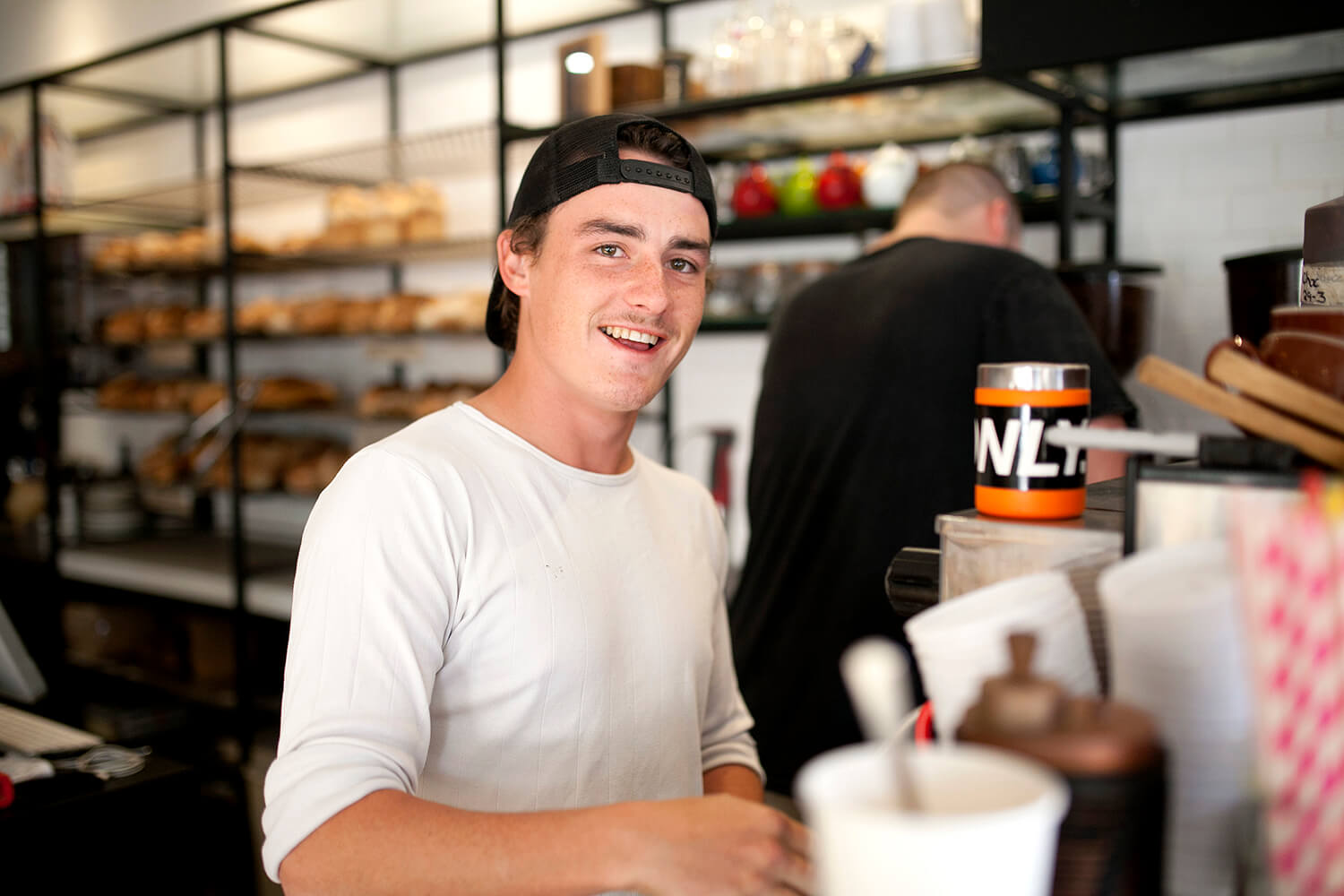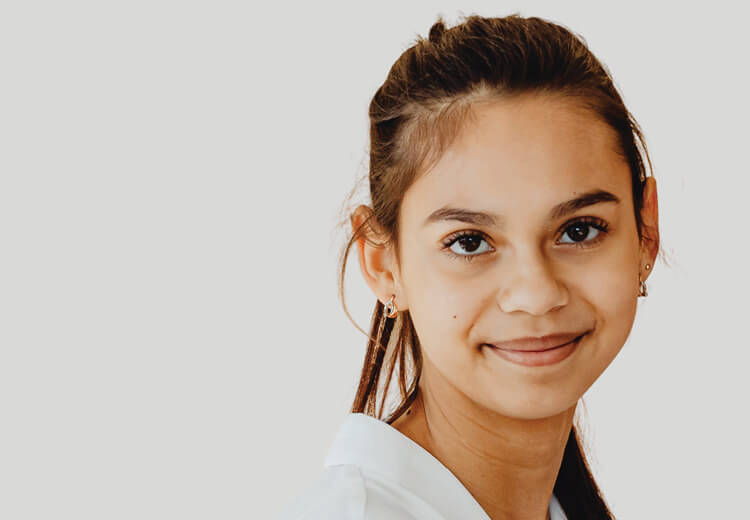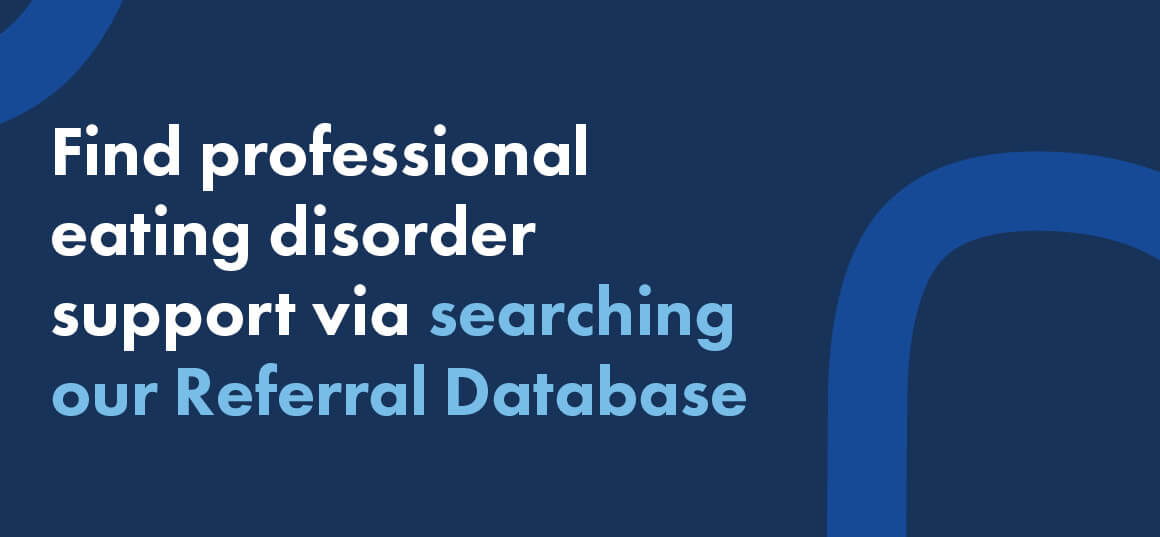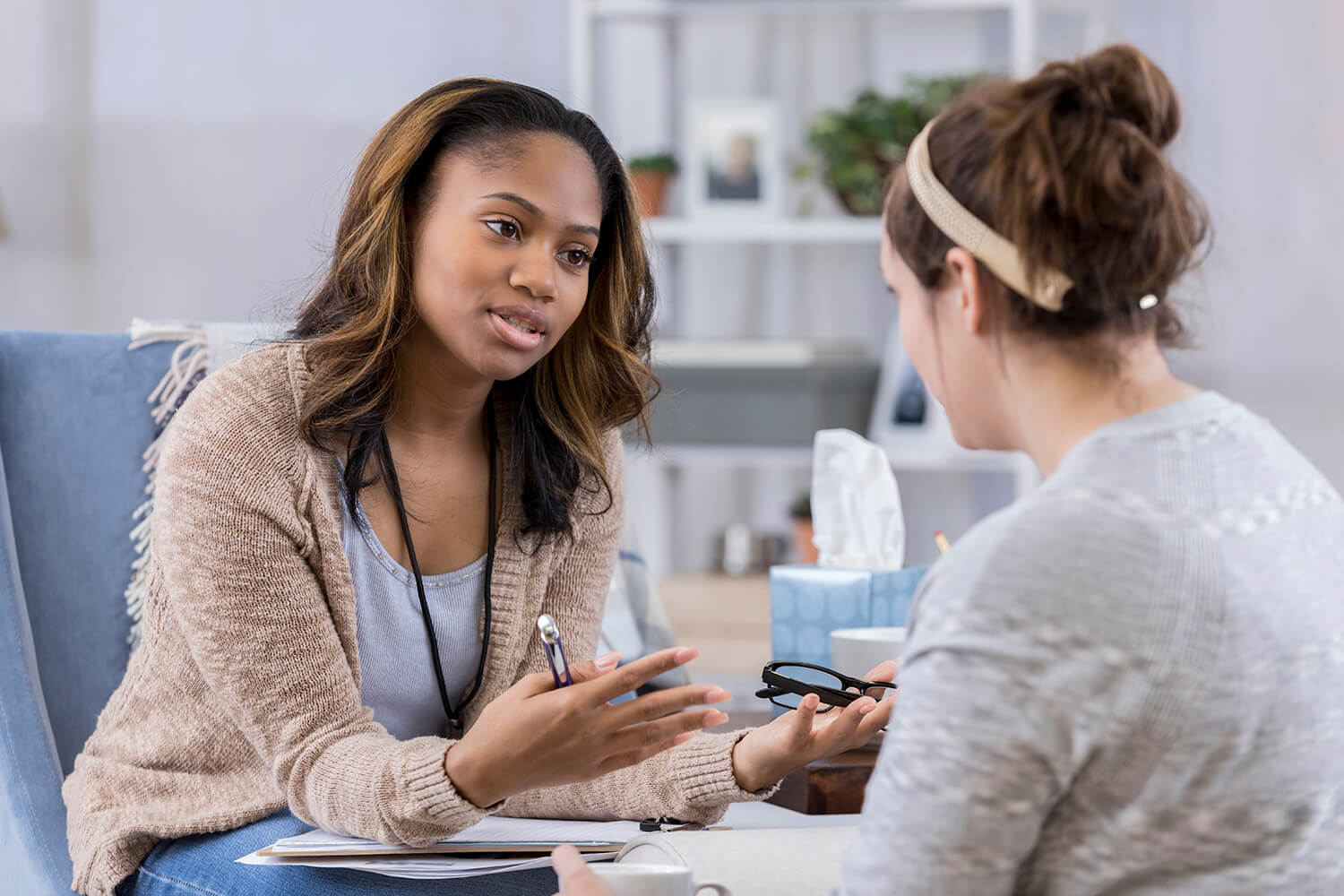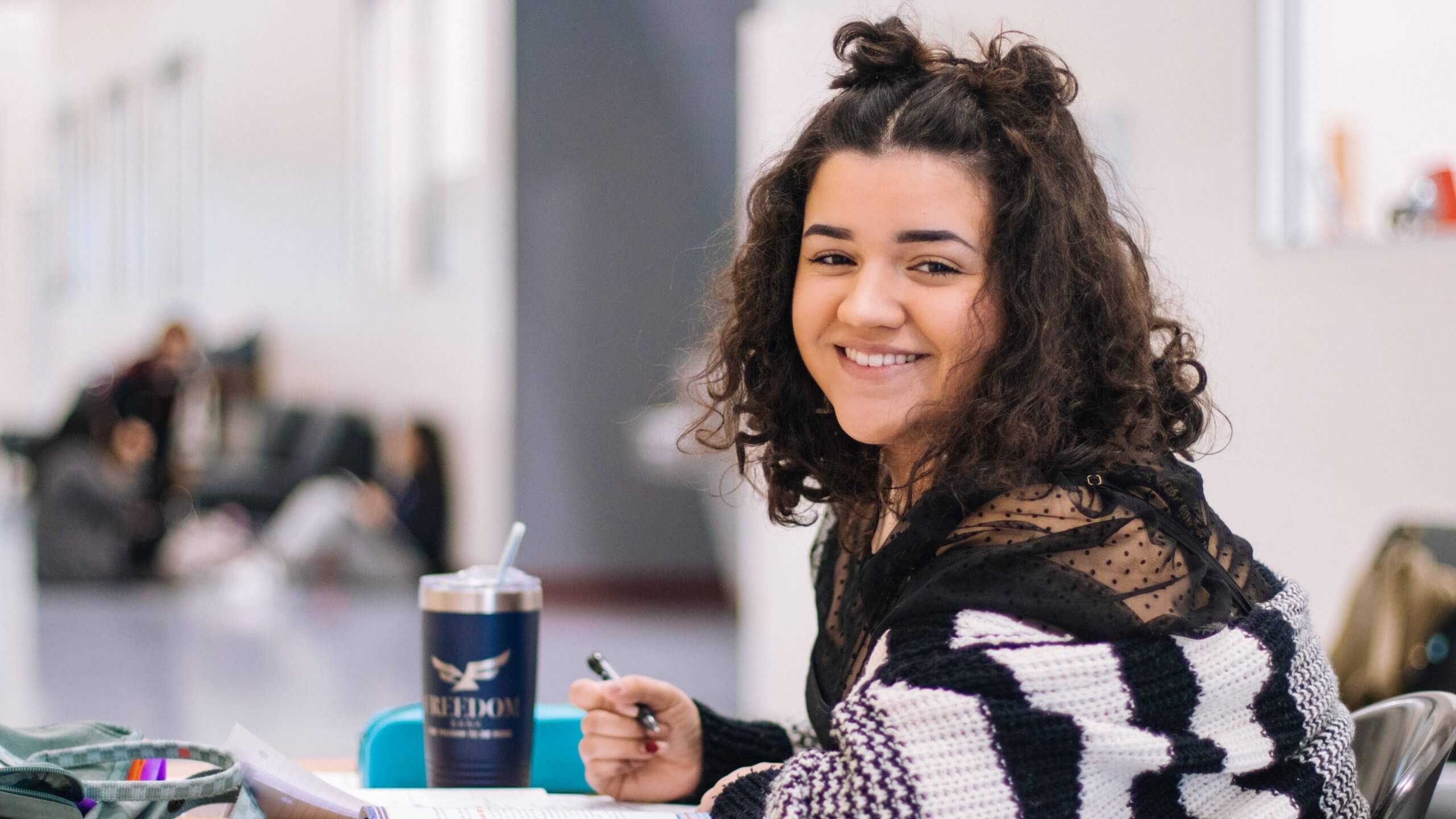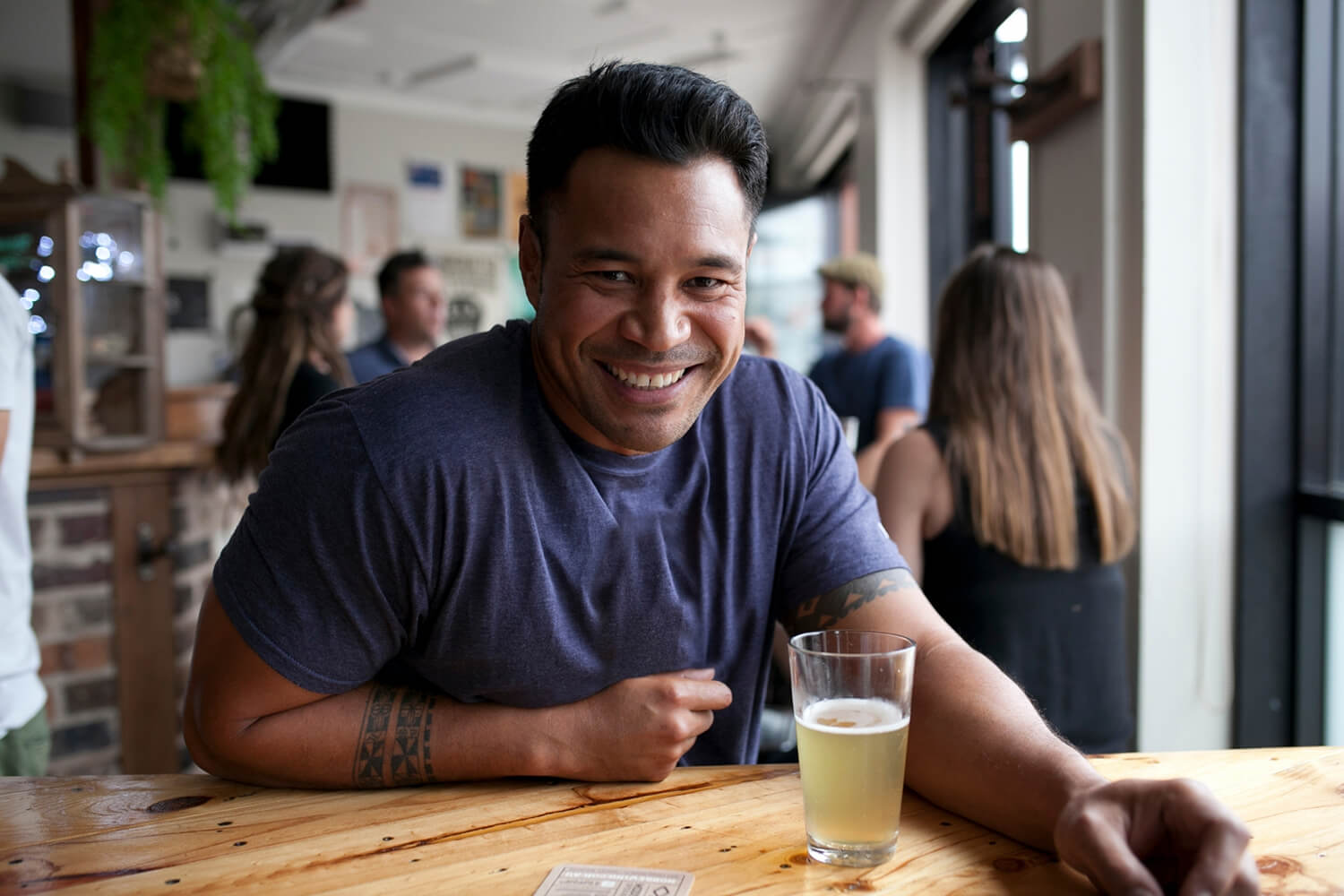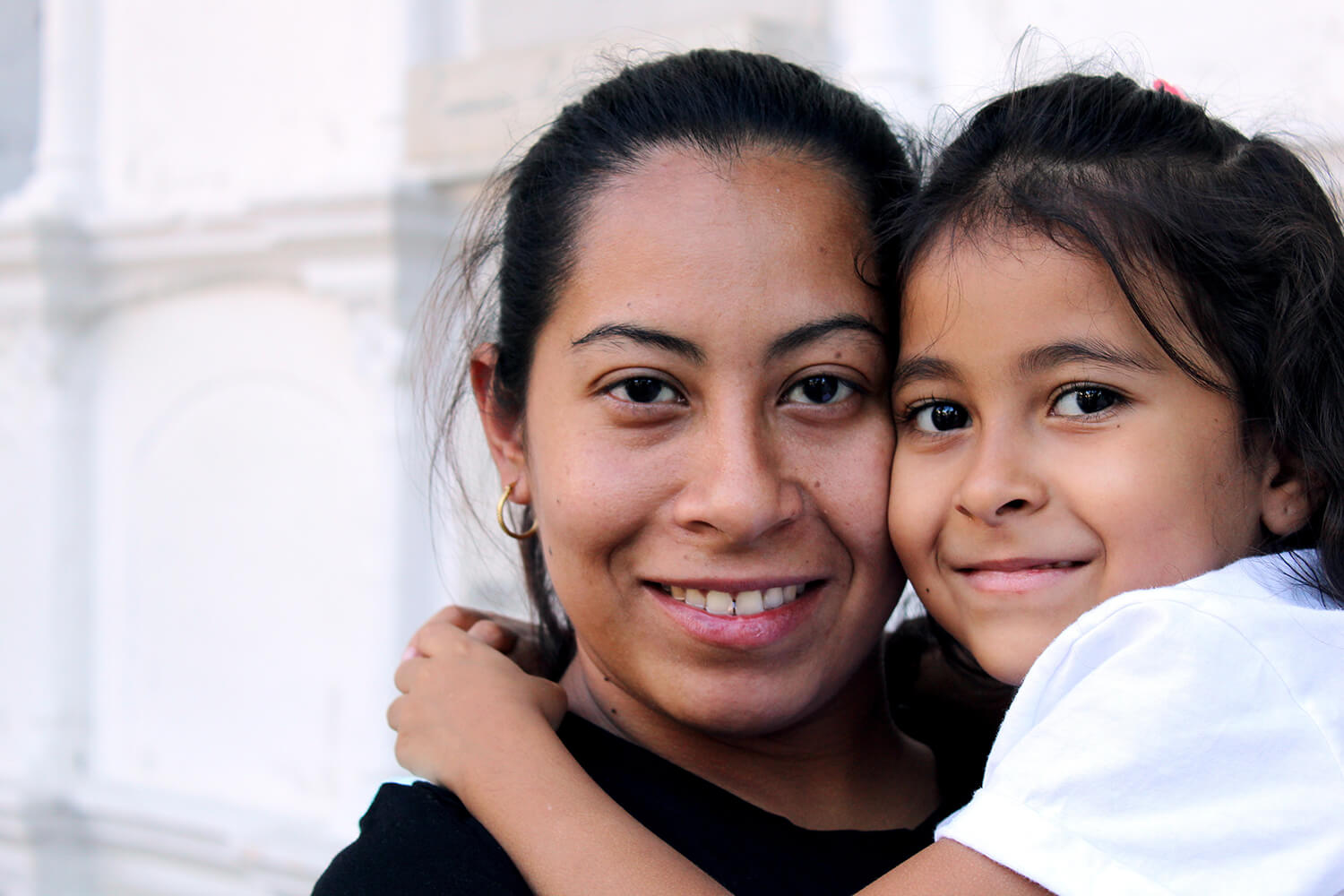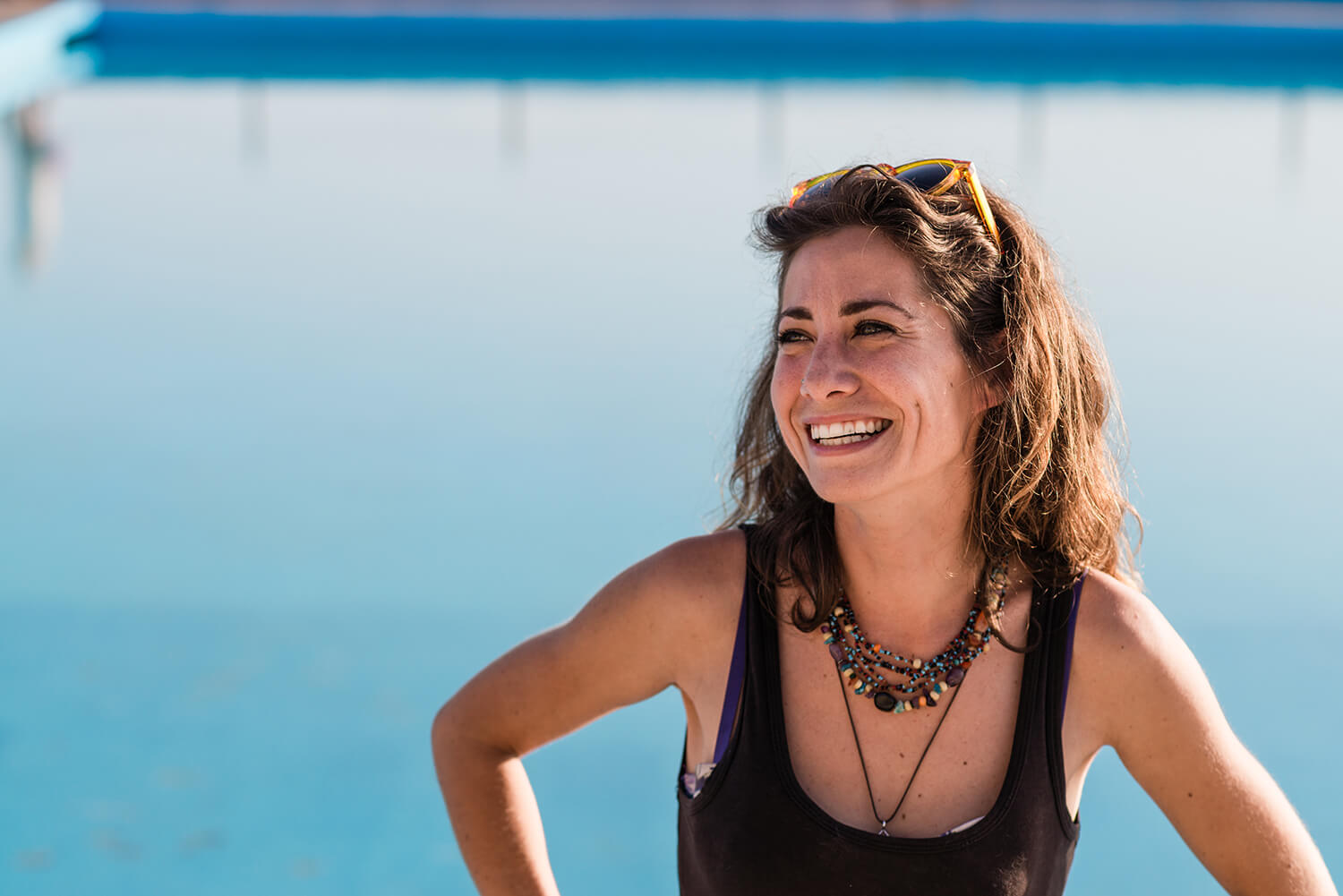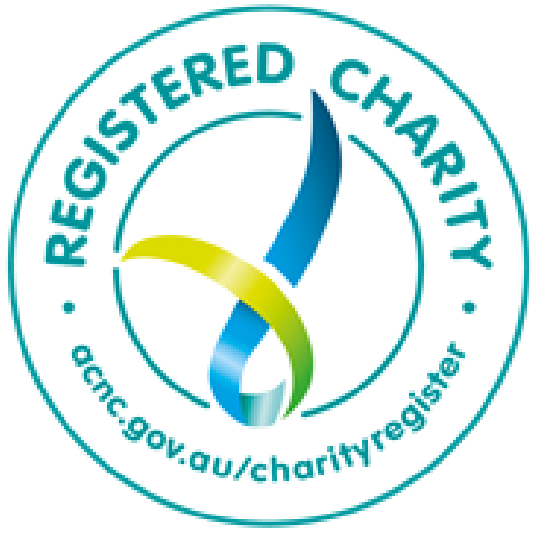A game-changing approach to care
Carolyn Costin swears full and complete recovery from an eating disorder is possible. For more than 40 years, she’s been changing lives through her revolutionary model of care. It was the basis for the Monte Nido residential treatment centres in the US, which have helped thousands to fully recover. Her treatment approach is also the basis for Australia’s first residential recovery centre, Wandi Nerida. It’s a place where people can create new beginnings.
In this episode, Carolyn tells our host Sam how she developed her model of care at a time when eating disorders were so misunderstood. Siena Armati, who travelled all the way to the US to attend Monte Nido after going in and out of Australia’s hospital system for years, explains why Carolyn’s approach saved her life. Wandi Nerida’s Zach de Beer and Butterfly’s Kevin Barrow explain why the centre is indeed a game-changer. Let’s talk.
Carolyn Costin:
I believe that you can be recovered from this. I strongly believe that you can actually overcome this.
Siena Armati:
It’s been a long time since I’ve told people I had an eating disorder. I had an eating disorder and I’m recovered.
Sam Ikin:
This is the Butterfly podcast from your friends at Butterfly, Australia’s national voice for eating disorders and body image issues. I’m Sam Ikin. We’ve talked about recovery a lot on this show. The main point that we keep trying to drive home is that recovery is possible. You’ve heard not just me, but experts, clinicians, researchers and survivors, all saying the same thing: Recovery is possible.
Sam:
But, that way of thinking has only come to prominence in the last few years. Before that, eating disorders were treated as a lifelong condition that had to be constantly managed—if they were treated at all. They were almost treated like addictions. That is until a woman in the U.S. took on her own eating disorder and won.
Carolyn:
My name is Carolyn Costin, and I’ve been in the eating disorder field for about 40 years. That’s really weird when I say it; actually, a little bit more than 40 years.
Sam:
She’s known all around the world as a pioneer who transformed the way eating disorders are treated. But, when she realized she had a problem decades ago, the whole concept of eating disorders was mysterious, and really poorly understood.
Carolyn:
I think I was 14, my friends and I all went on a diet and having the perfectionistic tendencies that I did, I just became very controlling around it, and I didn’t want to let it go. You take the temperament, you combine it with the fact that diet culture was strong, especially hitting people my age. Twiggy was out modelling and things like that. It sort of hijacked my brain, because I have the perfect temperament for it—the perfectionistic tendencies. And, nobody knew what was happening. So at first I got all this praise for it until it just got worse and worse. This was before there were journals, none of the eating disorder journals were around. There were a few newspaper articles and things like that, but it was hard to get good information about eating disorders at that time.
Sam:
Carolyn realized that she had a pretty big problem, and it was getting worse. She needed to do something, but there was no specialised treatment back then. So, she started to pave her own way and it turns out, she had an uncanny, almost intuitive understanding of what she needed to do.
Carolyn:
There wasn’t any treatment. There was no such thing as an eating disorder dietician. I tried to go to a couple of therapists, they had never seen anyone with anorexia before, and said some pretty weird things we won’t go into. So, I did a lot of work on myself. I put a lot of that into the practice. And then, there are just so many things that I did that have turned out to be very, well, it sounds like tooting my own horn a lot, but it turns out these were useful, I was doing CBT before I even knew what CBT was. Meaning that, instead of going back and doing psychodynamic psychotherapy, I was asking people, “Write down what you eat, tell me your thoughts about those foods, circle what you are purging,” and just getting into the weeds. That’s what you have to do.
Sam:
So, while lots of medical professionals were still coming to terms with the fact that eating disorders existed in the first place, Carolyn Costin was in the early stages of developing a world changing treatment plan.
Carolyn:
I really was recovered. I mean, I had gained the weight back, and I had mitigated all the different kinds of things like the perfectionism, and done things, add principles and different skills to ease my anxiety. And so, I just started treating people. Over time, I started seeing people or treating people. I didn’t really have an intention to specialise in eating disorders, but I had been a schoolteacher prior to that. And, one day the principal at my high school said, “There’s this girl that has that thing you had.” This was back in about 1978.
Carolyn:
When I worked with her, it was just one of those things that I felt like I was inside her head. I knew all the questions to ask, and I kind of got her on her way. She became recovered, and then someone else referred me somebody, and so I started making a small name for myself in this area. And then ultimately, in some ways, right place, right time. Because, I was recovered, I just treated people as if they could be recovered, and I’ve never really looked back from that stance. Six books later, and running several hospital programs, and opening up the first residential treatment centre in the United States…I’ve kind of been doing a lot in the eating disorder field.
Sam:
By CBT, Carolyn’s referring to cognitive behavioural therapy, which is part of the model of care, which we’ll get to shortly. That treatment centre was called Monte Nido, and the first one opened in Malibu, California. About a dozen others followed all across the United States. And until very recently, Australia hasn’t had anything similar. To give us some insight into what has been available in Australia, we’re going to talk to Siena from Sydney.
Siena Armati:
I’m 23 years old. I study at UTS. I have one more year left of a five-year degree and I work part-time.
Sam:
Siena’s eating disorder first started to get out of hand when she was about 15 years old, and she spent years going in and out of Australia’s hospital system.
Siena:
Each time was completely different. Each time was worse in terms of how severe my eating disorder got, and the tricks I picked up whilst being in a hospital for an eating disorder. So, there was a lot of work for me to do when I got out. And, I still didn’t understand what an eating disorder was. I didn’t really know where to go. All I knew was that I didn’t want to get better, because I just didn’t think I was sick. For someone to tell me, you need to gain weight was like, “What are you speaking about?” “I just went into hospital, I’m done. I’m good, leave me alone.”
Siena:
Yeah, it was pretty much just the waiting game at the end of the day. I’d go into hospital and get a bit better. Not mentally, physically. Go out, come back in. And yeah, it was a pretty vicious cycle for me and for my family. It just got worse every time.
Carolyn:
What I found about the hospital settings, first of all, not every patient needs the 24-hour care in a hospital. Not everybody who needs 24 hour care needs acute medical care. And, I thought there was a big mistake in putting a lot of people who—yes, they needed to be monitored and supervised, and have an external structure and have people around for support—but they weren’t medically compromised, so they didn’t really need to be in a hospital.
Sam:
The need for a specialised treatment centre started to take shape in Carolyn’s mind in the 1980s, rather than focusing more on the symptoms like they do in the hospitals. She wanted to create a place that taught patients how to continue to get better when they left and went back to their homes, and their families, and their jobs and all the factors that were there when the eating disorder started in the first place.
Carolyn:
I needed to have a place where people can go and we teach them real life skills that they need to use when they get out of treatment, otherwise it was a revolving door. And, I honestly have seen that a lot in my visits to Australia. Patients who have come here for treatment with me from Australia, I think my record was a girl in her twenties who had been hospitalized 21 times because of the inability to sustain the gains that she made in a hospital, because there just isn’t an opportunity in a hospital setting to do all those skill-based treatments.
Sam:
At this point in the story, it’s starting to become really clear that Australia needs its own version of Monte Nido. Well, it’s very, nearly got one. It’s based on Queensland’s Sunshine Coast, and it’s called Wandi Nerida. It’s based on 17 years of treatment in Monte Nido centres in the United States. But that name, Wandi Nerida, has got a really special significance.
Kevin Barrow:
Yes, actually it was gifted to us by the local Kabi Kabi people up in the middle of the Valley.
Sam:
You might recognize that voice, that’s the CEO of the Butterfly Foundation and all-around good guy, Kevin Barrow. We haven’t spoken to him since episode one, and we really should get him on more often.
Kevin:
It means “to gather together to blossom”, which is a lovely name, and in context of Wandi Nerida very much what we’re trying to achieve with the individuals who attended the facility.
Sam:
When it opens, Wandi Nerida will be Australia’s only specialist residential eating disorder recovery centre, and the emphasis is on recovery. Using Carolyn Costin’s holistic treatment approach, Wandi Nerida aims to help people fully recover.
Kevin:
If you become acutely unwell with an eating disorder, and you end up in a general hospital, all of a sudden the focus is very much on the physical symptoms. And so, as a result, we kind of get a revolving door where that individual, unfortunately, may end up back at the hospital. Wandi Nerida will be seeking to break that cycle. We’re looking to really tailor our care to the individual, and it may take several months to teach that individual the skills for recovery. So, when they’re discharged from the facility, they’re much less likely to end up back in a hospital setting.
Zach de Beer:
I’m Dr. Zach de Beer. I’m a clinical psychologist by training, and I am the clinical director of Wandi Nerida here on the Sunshine Coast.
Sam:
Dr. Zach is in charge of the day-to-day running of Wandi Nerida, and he says that, “While a lot of the treatment has been inspired by Carolyn Costin’s treatment and experience, this is a truly Australian holistic approach.
Zach:
Our model of care is obviously based on the Monte Nido model, but we also wanted to develop something that’s unique to Australia, because you can’t really just replicate things from overseas. So, we actually wanted to incorporate all the good things in the Carolyn Costin or in the Monte Nido model, but we also wanted to add things that are uniquely Australian. Also, in the last 10 years, there have been real advances in practice and the treatment of eating disorders. And we wanted to incorporate some of those things as well. That holistic care, that is what’s required to be effective, because some of these patterns and beliefs are so ingrained that some intensity is needed in treatment.
Sam:
Before, we dive any deeper into exactly what’s going to go on at Wandi Nerida, let’s go back to Siena. She first heard about Monte Nido when she was in an outpatient program through Butterfly.
Siena:
I’d seen dozen therapists and each time, it just was back to square one. So, a lady named Christie was speaking and she had gone to Monte Nido, I think a few years prior. She kept speaking about how wonderful it was; how she recovered from going there.
Sam:
…Because, she was the lived experience person that Butterfly brought in to talk to you. Okay.
Siena:
Yes. And, I think that’s the first lived experience I’d ever spoken to.
Sam:
That’s a pretty key thing now, you were years into treatment before you started talking to people with lived experience, which is now accepted as something that is quite intrinsic in helping people to recover.
Siena:
Definitely. I think even when I hear about people struggling, I’m like, “Oh, I’d love to help them”, because I know, back then, that could have been a key thing for me. I mean, in hospital, one of the therapies could have been someone coming in to speak to you, and helping you through it, that had been through it. But yeah, none of that.
Siena:
So, I listened to her and I was like, “That’s pretty cool,” but I just didn’t think that was for me at the time. I didn’t think that it was necessary for me to go somewhere to get better. And my eating disorder was my identity. I didn’t really want to get rid of it that badly at that time. Then I went into hospital one more time and that’s when it kind of clicked. I said to my parents, “I think I should go to Monte Nido.” My parents didn’t know anything about it; they did some research. And then, within a few weeks’ time, I had begun my admission with them, and I was going over end of November.
Sam:
So obviously, a clinic which is located in the United States is not very accessible to Australians. And the expense of both the travel plus the treatment puts a visit to Monte Nido out of reach of the vast majority of Australians. But Carolyn’s model of care works wherever it’s implemented, and it works for all eating disorders, regardless of the specific —rom anorexia and bulimia nervosa, all the way through to binge eating disorders.
Carolyn:
You can mix the different diagnoses, but obviously there’s important things to pay attention to, because they’re not the same. But when you’re in a group with the different patients who meet different criteria, I mean, one of the most important things to say is, “Look, you’re all here because you have an unnatural relationship with food, and food and weight have taken a unusual priority in your life, including how you evaluate yourself.” So, what we’re going to do is get back to a natural, healthy—and I put “healthy,” in quotes—each person finds what’s appropriate for them.
Carolyn:
A healthy relationship to food and your body, that’s the goal. And so, you can mix diagnoses. You you have to be transparent; you have to be open about it. You have to say things when you’re running groups. Like, the people with binge eating disorder might say things like, “Oh, we admire all you guys who have anorexia, because you have such willpower.” And, you have to be astute as a clinician to say things like, “No, that’s not willpower”.
Carolyn:
If she really had willpower, she would eat this cookie right now. It is kind of funny, but I like to use humour. And I say this, you have to be able to know how to show people when they think their logic has turned on its head. And although, they think they might be in total control, you can show them that’s not really control. Because if it was really control, you could eat it or not eat it, but your brain now is hijacked and obligates you to not eat the cookie. So, you no longer have free will or control like you think you do, things like that.
Sam:
Carolyn’s model of care is a truly holistic approach. It manages to walk the line where mental health meets physical health with remarkable results. And it’s no wonder so many Australians had been making the journey to the United States at great expense.
Siena:
I was so malnourished; I was there for five and a half months. My brain had completely changed with food. I was able to see things more clearly, I was able to create relationships with the people in the house. And I remember all the nurses I got along with so well by the end of it. I think that really brought me back to life—I’d never had to work on that sort of stuff. So yeah, the intensiveness, and the food, and the habit breaking, and the lovingness of the staff really was the difference for me.
Sam:
And, while it was an overwhelmingly positive experience, there were still drawbacks to having to travel overseas for this kind of treatment.
Siena:
It was hard for the first few weeks. I was in a different country, I didn’t have people to just phone. There was a phone booth and people would always be in there. So, it was pretty intimidating. And, my mom could come once a day, but there’s only so much you can do in a house that’s not yours.
Siena:
I had great support back home and they checked in on me when they could. But I think the main thing that helped me was breaking all the rules, 24/7 care.
Sam:
Yeah.
Siena:
Even though you get that in a hospital, they don’t have the right team there. Everyone was in the same boat.
Zach:
Wandi Nerida will offer a very specific service, so it’s not going to be for everyone, but it is a much-needed service, and it does close the gap in services. So, it provides a potential solution for people who are medically stable, but they feel stuck with their eating disorder. Or people who have received lifesaving care in our hospital setting but feel that they are ready to do that work now.
Sam:
Siena considers herself extremely lucky to have been able to go overseas and spend time at Monte Nido. She hopes that having a similar facility in Australia is going to open this kind of treatment up to far more people.
Siena:
I think it’s long overdue, it’s very beneficial and needed. It’s pretty sad that there’s probably a lot of other people who aren’t able to go to places like Monte Nido for multiple reasons. And the only reason that they aren’t able to get help is because of that.
Zach:
We want to make sure that the model works, and we want to be fair to people. So, we want to offer this service to people who are in the right stage, and for whom it’s going to be the most beneficial. It’s is a national service, it’s partly funded by, or the setup was funded by the federal government. So, even though it’s based in Queensland, it’s not only for Queenslanders.
Sam:
Kevin Barrow says, “Butterflies vision is for Wandi Nerida to be a truly unique experience, which fills a gaping hole in Australia’s healthcare system.”
Kevin:
We have made the facility in line with the requirements for a licensed private facility, which means all the quality of care is there to be called a hospital. But we very much don’t want it to look and feel like one, its designed to look and feel like a home. And the staff working in that environment are really there to tailor therapy, care for that individual, they’ll eat meals with the individual and they’ll be part of their recovery journey.
Kevin:
The problem is if it looks, feels, and smells like a hospital, it probably is, and that’s very much the environment that we’re not trying to have here.
Sam:
Wandi Nerida could be the beginning of a revolution in treatment available to the growing number of Australians who suffer from eating disorders. And. Butterfly says, right now, that’s around a million Australians.
Sam:
And remember, this is the mental illness with the highest mortality rate. So you could say this centre is vital, but it’s not open yet and it’s facing setbacks. After a hugely difficult and costly year in 2020—we’ve had a global pandemic and devastating bush fires—the Queensland Government has knocked back a crucial funding request.
Kevin:
We have received some funding from the federal government to enable us to build the facility. Philanthropy helped us purchase the land, and we worked with our charity partner, endED, in the initial phases to build the facility.
Kevin:
Moving forward, though, we want to make sure that this facility is open to all Australians independent of their financial circumstances. So, this level of care can be quite expensive. There’s a high number of staff involved, and we’re seeking to raise funds to ensure that those people who maybe don’t have private insurance, or don’t have the financial means to pay their way to the facility, we can subsidize their attendance.
Sam:
Carolyn Costin results speak for themselves. She’s helped thousands of people recover from eating disorders.
Siena:
It’s been a long time since I’ve told people I had an eating disorder. Yeah, I just needed to have a clean slate, figure out who I really was. And now, I mean, if people would ask me, I’d say, “Yeah, I had an eating disorder and I’m recovered.”
Carolyn:
You were born with a core healthy self, and over time you developed an eating disorder self, and it doesn’t get its power from the outside, it’s not like some alien being invaded you, you give it it’s power.
Carolyn:
And so, my work involves strengthening your healthy self, and that part of you heals your eating disorder. If I could do it, so could you. I want to say, I really believe that people can get better, but I think they have to work in a collaborative place, and they have to deal with the fact that the battle not being between you and a treatment team, or you and a therapist, or you and your mom. The battle is between you and you. And, you beginning to talk back and learn how to strengthen your healthy self, so it becomes back in control again.
Sam:
If you’ve heard about this treatment plan for the first time, and you’re interested, you think Wandi Nerida might help you, or you know someone you think it might help, you can take an action now, even though the centre isn’t yet opened.
Zach:
At the moment, because we’re not open yet, there’s also an expression of interest, a button on our website. People can fill in a form, and we can then update them on developments. And, when we are ready for referrals, we could alert them.
Kevin:
It’s been a really challenging year. It’s been challenging for everyone with mental health issues within Australia. But particularly for eating disorders, COVID’s really been a perfect storm. And, as a result, there’s a huge level of demand on services across Australia.
Sam:
While those COVID restrictions around the country are starting to change, Butterfly is expecting that they will be long-term impacts from the pandemic.
Kevin:
Wandi Nerida is there to make a difference. It won’t be for everybody, but we believe it will fill a gap in the system of care. Certainly, at this point in time, there are a huge number of people in need. So, we’re looking forward to getting this facility open, and providing a new level of care in the Australian setting.
Sam:
If you’re struggling with an eating disorder, or you just think you need some support, you can call the Butterfly National Helpline on 1800-33-4673. Easy way to remember that—1800 ED HOPE. You can also chat online or check out all the resources available on the website at butterfly.org.au, or email support@butterfly.org.au.
Sam:
Now, if you want to find out more about Wandi Nerida, or you’d like to support it, go to wandinerida.org.au, that’s W-A-N-D-I-N-E-R-I-D-A.org.au. Recovery is possible, but access to effective services is essential. The number for the National Helpline, again, 1800-33-4673. The Butterfly podcast is an Ikin Media Production for the Butterfly Foundation. It’s hosted, edited and produced by Sam Ikin with the assistance of Belinda Kerslake and Camilla Becket. The theme music is from Cody Martin with additional music from Breakmaster Cylinder.
Sam:
And special thanks in this episode to Carolyn Costin, Siena Armati, Zach De Beer, and Butterfly CEO, Kevin Barrow. If you’d like to support the podcast, the best thing you can do is to share it with someone you think is going to get value from it. You can find it by searching Butterfly: Let’s Talk, wherever you get your podcasts.




